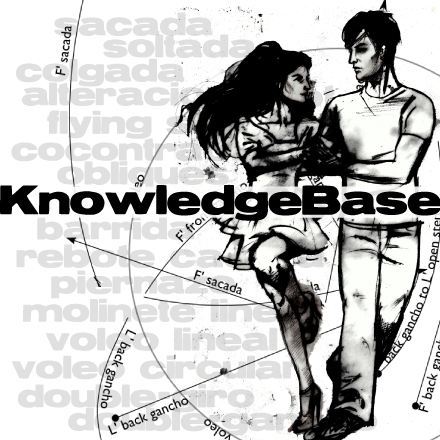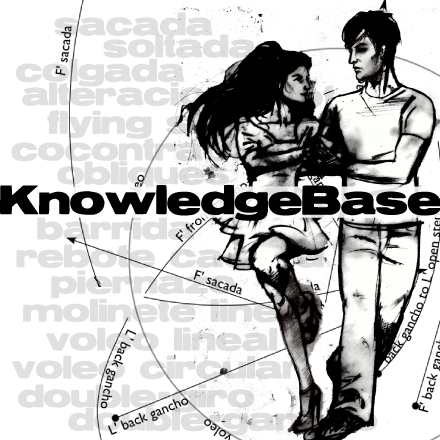Maestro El Pulpo applied the rules of barrida to the entire leg, creating a delicious and surprising system of play for the partners’ legs. Because of the softness and twisting interplay that results from these movements, El Pulpo was named “the octopus”.
The key to these movements is flexion of both legs’ hip and knee joints with minimal muscle contraction, and the use of the oblique muscles for pivoting.
El Pulpo’s system generates strings of ganchos and double-ganchos, accompanied by voleos, soltadas, ordinary barridas, and anything else you can find. Pulpo plays with these movements in long sequences, but they can be used in a more subtle way as well.
Technique
- Decelerate the revel into the gancho and receive her leg with softness in your own so you can grab her leg with the friction of your touch.
- Keep the base legs very close together. When transitioning from one gancho to another, think about where you need to step so that your base’s next position will be close enough.
- To prevent the revel from exiting the gancho, use conservation of co-contraction.
- Go all the way into the gancho, then relax your leg and wait for the exit mark. Do not take your leg out automatically and arbitrarily. Do not grip the mark’s leg during the gancho.
- Keep your knee and hip joints very relaxed, but maintaining external rotation. If you let your base leg’s hip joint into internal rotation you will feel stuck.
- When you feel something strange happening, first turn your obliques in the direction you feel. When you reach the limit of where you can easily move, then send your free leg gently in the same direction.
Impro Toolbox
Pulpo uses 5 tools of barrida and sandwichito to create transitions.
1. The sweep/pass-through: Standard barrida sweeps the revel’s projected leg from front or back step to side step. As a Pulpeade, the mark wraps his own leg around the revel’s calf or thigh. This can be done to the outside or inside of her leg. Can be initiated with a mark’s gancho or patada.
2. The pick up: Standard barrida who arcs up from the floor and down to another spot. As a Pulpeade, the foot is lifted into a gancho.
3. Sandwichito (Mark’s or Revel’s) when the first gancho is front or back open for the dancer doing the sandwichito. This has the result that the Revel transitions her free leg from a front to back gancho or vice versa (or to double-gancho).
4. Mark’s front or back step (equivalent to walking around her during calesita) this has the result that the revel’s gancho is transferred from one of his legs to the other leg.
5. Revel’s soltada-pirouette. The mark doesn’t have to move in order to release the revel in a soltada pirouette into the next gancho.











